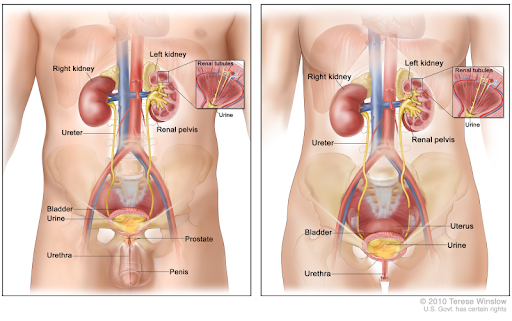
The normal function of the bladder is to store and empty urine in a coordinated, controlled fashion. This coordinated activity is regulated by a complex interaction of the central and peripheral nervous systems.
The urinary bladder is a spherical organ with unique properties that enable it to store and empty urine. The bladder is composed of two functional layers; an inner urothelial lining and an outer smooth muscle layer. In addition to the bladder, the bladder neck is a funnel-like outlet of the bladder which leads to the urethra. It is also known as the internal sphincter. The urethra a tube-like structure which serves as a channel to carry urine from the bladder to the external surface, and the external urethral sphincters composed of striated muscles (group of muscles which surround the urinary passage distal to the bladder neck) complete the lower urinary tract.
The muscles and nerves of the urinary system must function in a coordinated fashion with the bladder in order to perform its two major functions of storage and elimination of urine. Nerves carry messages from the bladder to the brain and then from the brain to the muscles of the bladder telling them to tighten or release, allowing the bladder to empty during urination.
There are two main components to a normal micturition cycle of the bladder: storing and emptying. The bladder will initially fill (store urine) under a low pressure (high compliance). This requires both relaxation of the detrusor muscle along with its elastic properties of the bladder wall to enable the bladder to expand under low pressure. At the same time the striated sphincter is required to be contracted to maintain an elevated outlet resistance preventing urinary leakage. In order for the bladder to empty, the sphincter relaxes followed by a bladder contraction. Any abnormality in either component of the micturition cycle leads to bladder dysfunction.
5 most common diagnosis of the bladder:
- Retention
- Hematuria (blood in urine)
- Overactive Bladder (OAB) or Frequency
- Incontinence
- Interstitial Cystitis
For an alphabetical listing of all the urological conditions we treat click here.

